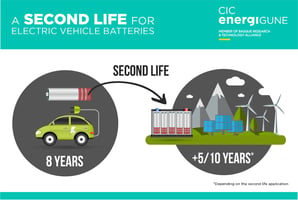"Made in China" no longer has a bad connotation, thanks to the world of EVs. The auto industry has...
Solid-State Batteries will change the world, but not for 2 more decades!

As the world seeks alternative energy sources and environmental sustainability, solid-state batteries have captured the attention of innovators and investors. This technology promises to revolutionize the field of electric vehicles and power storage by offering superior performance, safety, and stability over conventional lithium-ion batteries.
But while many hail solid-state batteries as the future of EVs, some experts caution that achieving mass production and commercial viability may take much longer than expected. This post will examine the benefits, challenges, and prospects of solid-state batteries as a game-changing technology.

Solid-state batteries come in different types and configurations, each with its own properties and trade-offs. For example, semi-solid-state batteries use a combination of a solid electrolyte and a liquid electrolyte with a larger volume ratio. This design makes them easier to manufacture in large quantities and optimize for performance and cost. Quasi-solid-state batteries have a higher proportion of the solid electrolyte, reducing the risk of leakage and enhancing stability. Finally, fully solid-state batteries have no liquid electrolyte, making them the most robust and durable against high temperatures, shocks, and chemical reactions.
The benefits of solid-state batteries are numerous and compelling. They offer higher energy density, up to twice that of lithium-ion batteries, meaning they can store more power in less space and weight. They also have a higher voltage and can discharge more energy rapidly, enabling fast charging and long-range EVs. Solid-state batteries are also safer and more stable, as they don't contain flammable or volatile components that can catch fire or explode. Finally, solid-state batteries can withstand extreme temperatures without degrading, prolonging their lifespan and reducing maintenance and replacement costs.

However, the challenges of solid-state batteries are equally significant and, in some cases, daunting. First and foremost, the cost of producing solid-state batteries currently needs to be lowered, as it requires expensive materials, processing, and manufacturing equipment. One estimate suggests that the price per kilowatt-hour of solid-state batteries is twice that of lithium-ion batteries, which already poses a challenge for many consumers and businesses. Second, the supply chain for solid-state batteries needs to be more mature and unevenly distributed, with most of the production capacity and technology located in China. This creates a potential geopolitical risk for countries that rely heavily on EV and renewable energy adoption to meet climate goals. Third, solid-state batteries still need to be recyclable, meaning that disposing of them could create environmental and health hazards. As of today, many parts of a solid-state battery can't be recycled. Finally, solid-state batteries are prone to the formation of dendrites, which are tiny metal crystal spikes that can penetrate the protective layer of the battery and cause short circuits and failures over time.

The good news is that companies like Nio in the pic plan to implement semi-solid-state batteries by 2025. Solid-state batteries hold enormous promise as a clean, efficient, and reliable energy source for EVs and various applications. However, realizing this potential requires overcoming significant challenges related to cost, supply, recycling, and safety. For the next two decades, it is unlikely that solid-state batteries will replace lithium-ion batteries or become mainstream due to these barriers. However, the technology is maturing, with leading companies and research institutions investing heavily in R&D and scaling up production. As costs decline, supply chains diversify, regulations evolve, and new solutions emerge, solid-state batteries could become the norm rather than the exception. Until then, it is essential to balance the enthusiasm for the technology with caution for the reality of its limitations. Only a strategic and patient approach can turn solid-state batteries into the future of EVs and power storage.
Pic Credit - Nio Car Sluggish Cell Title Pic Quasi-State Pic
Content Credit - Research Report Motortrend - Challenge Ahead


